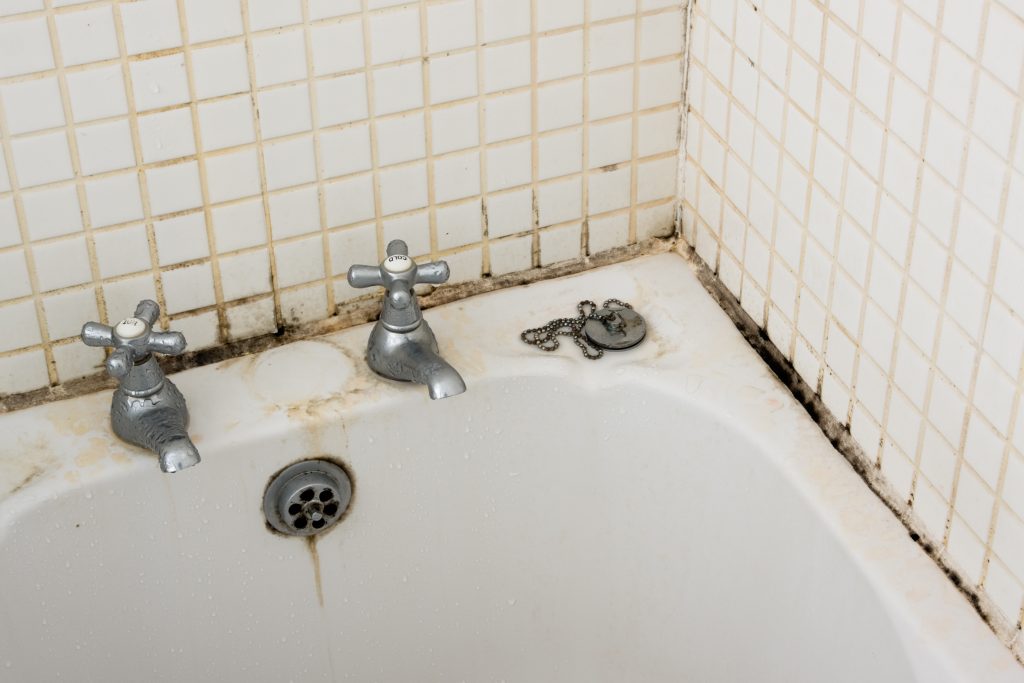Though unwanted, mold is a common occurrence in households and buildings, particularly when moisture is present. If you spot black mold in one of your rooms—in the bathroom shower or around the kitchen sink, for example—you may wonder exactly how dangerous it is and what kind of treatment is needed. If the mold is black, is it toxic? When should you call a professional?
\In short, not every mold that is black in color is considered toxic—and “toxic” black mold should actually be treated with the same care and attention as one would with any other kind of mold. In this article, we’ll highlight some common types of mold, the difference between toxic black mold and regular black mold, and the best approach to black mold remediation with Sierra Restoration.
While there are thousands of mold species in the world, each with some unique characteristics, all molds have conditions for formation in common. To develop, mold requires:
When spores land in an environment with all of these conditions, they will grow and spread if left untreated.
The appearance and impact of mold varies between species. Here are some of the most common types of mold found in homes and buildings.
When people discuss toxic black mold, this is the species they are referring to. Stachybotrys chartarum is greenish-black in color, slimy in texture, and grows on materials high in cellulose. Several health issues are associated with Stachybotrys chartarum, including respiratory issues and fatigue, which is why it is commonly considered the most dangerous mold type.
Also dark in color and sometimes mistaken for Stachybotrys chartarum, Cladosporium has a smooth texture and can form on old fabrics, wood, and paint in rooms with poor ventilation. With contact, it can cause respiratory issues and skin rashes.
Penicillium is recognizable for its blue-green color and development on spoiled foods. It can sometimes be found in walls, insulation, and other home areas, too.
This common mold is yellow-green or white, powdery, and can also be found on spoiled food. Exposure to Aspergillus can cause aspergillosis and lung infections.
Another green-black mold, Alternaria’s spores require warm, dry air to spread. This mold is commonly known for triggering allergies and related health problems.

If you come across mold, it’s natural to want to identify the species, assuming that will help you know how best to remove it. But according to the CDC, any mold you find in your home “should be treated the same with respect to potential health risks and removal.” So although certain health conditions are linked to particular mold species, and although Stachybotrys chartarum is thought of as the most toxic, all cases of mold—toxic or not—should undergo similar remediation procedures.
We recommend professional mold remediation over DIY mold removal. Even if the site of mold seems small and manageable, a professional team can best identify the source and other hidden spots in the home that need to be treated. Mold experts are trained in advanced remediation techniques, using state-of-the-art equipment to eliminate mold and ensure it doesn’t return.
The process includes:
If you need mold remediation in or near the Cache Valley, call Sierra Restoration. Since 2010, we have provided Utah and Idaho communities with competitive pricing, professional craftsmanship, and 24/7 emergency assistance at home.
We proudly provide services in:
Our trusted restoration and remodeling team applies our motto to every job: “Restoring dreams one home at a time – with value, quality, and timeliness in mind.”
Schedule your emergency appointment with Sierra Restoration at 435-466-7749.
If you have a question or would like to request a free estimate, please contact us using the form below.
If this is an emergency, please call (435) 563-4007 for 24/7 service.